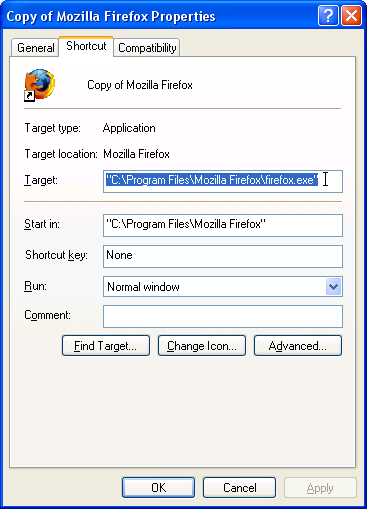

- WORKING WITH FIREFOX PROFILE MANAGER HOW TO
- WORKING WITH FIREFOX PROFILE MANAGER DOWNLOAD
- WORKING WITH FIREFOX PROFILE MANAGER WINDOWS
WORKING WITH FIREFOX PROFILE MANAGER WINDOWS

WORKING WITH FIREFOX PROFILE MANAGER DOWNLOAD
WORKING WITH FIREFOX PROFILE MANAGER HOW TO
Best Parental Control for iPhone & iPadįirefox has updated its privacy policy and gives you control over your data How to Download Mozilla Firefox.IPVanish VPN vs Private Internet Access.htmlSuite '*chrome firefox-bin' testSuite.html seleniumResults. Java -jar test/dependencies/Selenium/selenium-server.jar -firefoxProfileTemplate /path/to/profile \ Outside of Ant, the command might look something like: The Ant task above, with this option, looks like this: So you get the certificate exceptions, but without any of the other clutter you would get if you used a whole profile. This tells Selenium to use your partial profile (with certificate exceptions) as a basis for minting its new profile. When you run your Selenium server (like in my Ant example above), pass a -firefoxProfileTemplate /path/to/profile/dir argument to it.Delete everything in the directory except for the cert_override.txt and cert8.db files.This creates an exception for it in the profile.

Accept the self-signed certificate when prompted.Browse to the HTTPS URL (with self-signed certificate) you're going to be testing against.Select the profile and run Firefox using it.Put it somewhere inside the project where you're writing the tests. You'll be prompted to choose a directory for the profile.

Start Firefox (the one you're going to run your tests with) with the profile manager: firefox -ProfileManager.Close down any running Firefox instances.It's a bit of a pain in the arse, but it does seem to work. I think I've now worked out the solution, which was largely based on. This kind of worked, but we still got odd popups from Firefox about new extensions being installed. One technique we were using was to create a custom profile run Firefox using that profile browse to the HTTPS URL and accept the exception into that profile then close the profile. As Selenium effectively runs Firefox with a new profile every time, you potentially lose any certificate exceptions you might accept. This works without a hitch if you're not using HTTPS but as soon as your tests redirect to an HTTPS URL on the same host (we serve parts of Prism over SSL), where your SSL certificate is self-signed, things go wrong. Here's the part of the Ant build script which runs the HTML suite using Selenium : We use it on Talis Prism for testing the UI, running a Selenium server instance then firing Ruby rspec tests and an older HTML suite at it. Selenium is a decent tool for testing web UIs, with good integration with a variety of languages.


 0 kommentar(er)
0 kommentar(er)
